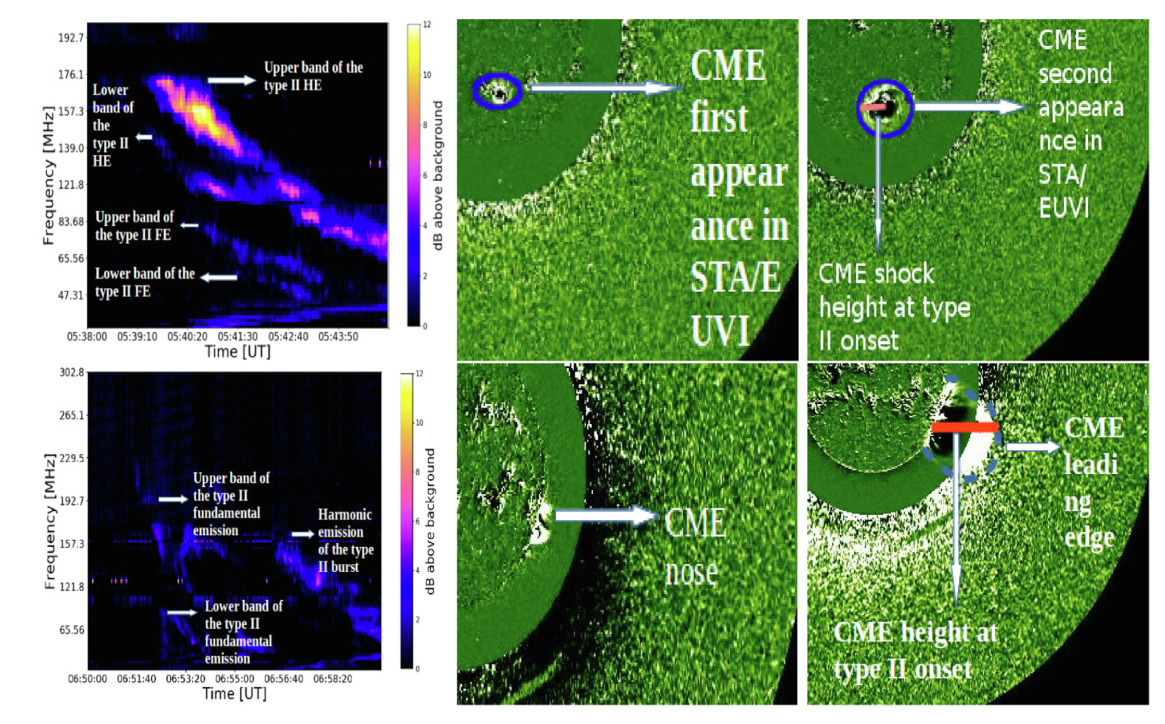Scientists have identified a faster method of predicting space weather. Solar Radio Bursts (SRBs) from eruptions driven by Coronal Mass Ejections (CMEs) have been found to predict space weather hazards rapidly with the help of ground-based instruments.
Solar eruptions, primarily driven by coronal mass ejections or solar flares, influences space weather, and predicting space weather hazards is crucial as it impacts satellite communication, telecommunication, Global Navigation Satellite Systems (GNSS), and so on. Radiations from such solar eruptions are hazardous for the astronauts and crew of the flights. Therefore, it is a challenging task for scientists to predict and forecast space weather.
Forecasters use ground-based instruments and satellites to monitor the active regions of the Sun for any changes to predict hazardous space weather events. This takes place mainly through remote observations of the sun's coronal mass ejections. However, CMEs take 1 - 5 days to reach us, thus delaying the tracking by that period.
A team of scientists from the Indian Institute of Astrophysics (IIA), an autonomous Institute of the Department of Science and Technology (DST), along with collaborators over the world, have reported that a type of Solar Radio Bursts (SRBs) observed using the global network of solar radio telescopes called CALLISTO or Compound Astronomical Low-cost Low-frequency Instrument for Spectroscopy and Transportable Observatory can be used to predict space weather hazards rapidly. Radio bursts at low frequencies are associated with energetic CMEs that travel far into the interplanetary (IP) medium much faster, thus speeding up the tracking process.
The speed of the shock due to radio bursts makes their measurements possible using ground-based radio telescopes in comparison to the detection of CMEs in-situ through space-based telescopes 1 - 5 days later.
The worldwide team of astronomers including A. C. Umuhire from University of Rwanda, J. Uwamahoro, University of Rwanda, Rwanda, K. Sasikumar Raja, Indian Institute of Astrophysics, India, A. Kumari, University of Helsinki, Finland, and C. Monstein, Istituto Ricerche Solari (IRSOL), Switzerland analysed 51 high frequency a type of SRBs called HF Type II bursts from CALLISTO distributed at different longitudes around the globe. Three of them in operation in India are at Gauribidanur, Karnataka, Udaipur, Rajasthan, and Ooty, Tamilnadu. The global network enables monitoring the radio emissions from the Sun 24 x 7, providing opportunity for statistical study of radio bursts.
They found that a type of solar radio slow-drifting bursts known as Type II bursts serve as early indicators of incoming space weather events that could affect the Earth.
"As the radio emissions arrive Earth within eight minutes, while the CMEs take 1 - 5 days to reach us, depending on their speeds and direction of arrival, ground-based cost-effective low-frequency, radio telescopes could play a crucial role in predicting and forecasting the space weather hazards", says Dr. K. Sasikumar Raja of IIA.
Their research published in Advances in Space Research Journal found a good correlation between the average shock speed measured using ground-based radio observations and those derived using the space-based coronagraphs (aboard SOHO/LASCO and STEREO spacecraft).
“This result implies that even in the absence of the space-based instruments, ground-based radio observations help in predicting the space weather hazards,” adds K. Sasikumar Raja.

Figure 1: Top panel: The dynamic spectra of HF type II burst observed with the with the CALLISTO spectrometer at Gauribidanur Radio Observatory, India, on 13 June 2010 (FE and HE stands for fundamental and harmonic emissions). The start frequency of this busts is 190 MHz. Various features of this burst are marked on the spectra. The CME seen in STEREO FOV is also shown in this panel. The ‘blue’ circles represent the fitting of a circle to the EUV wave to measure the shock formation height. Bottom panel: The dynamic spectra of HF type II burst observed with the CALLISTO spectrometer at GRO on 05 October 2013. The start frequency of this busts is 240 MHz. Various features of this burst are marked on the spectra. The CME seen in STEREO FOV is also shown in this panel.
For more details, K Sasikumar Raja (sasikumar[dot]raja[at]iiap[dot]res[dot]in) can be contacted.






























